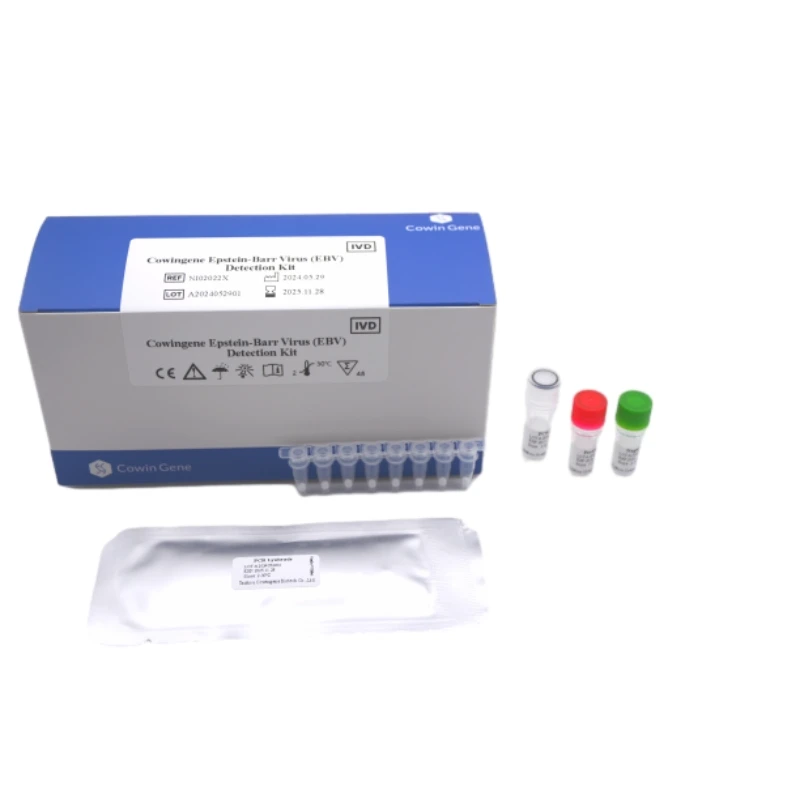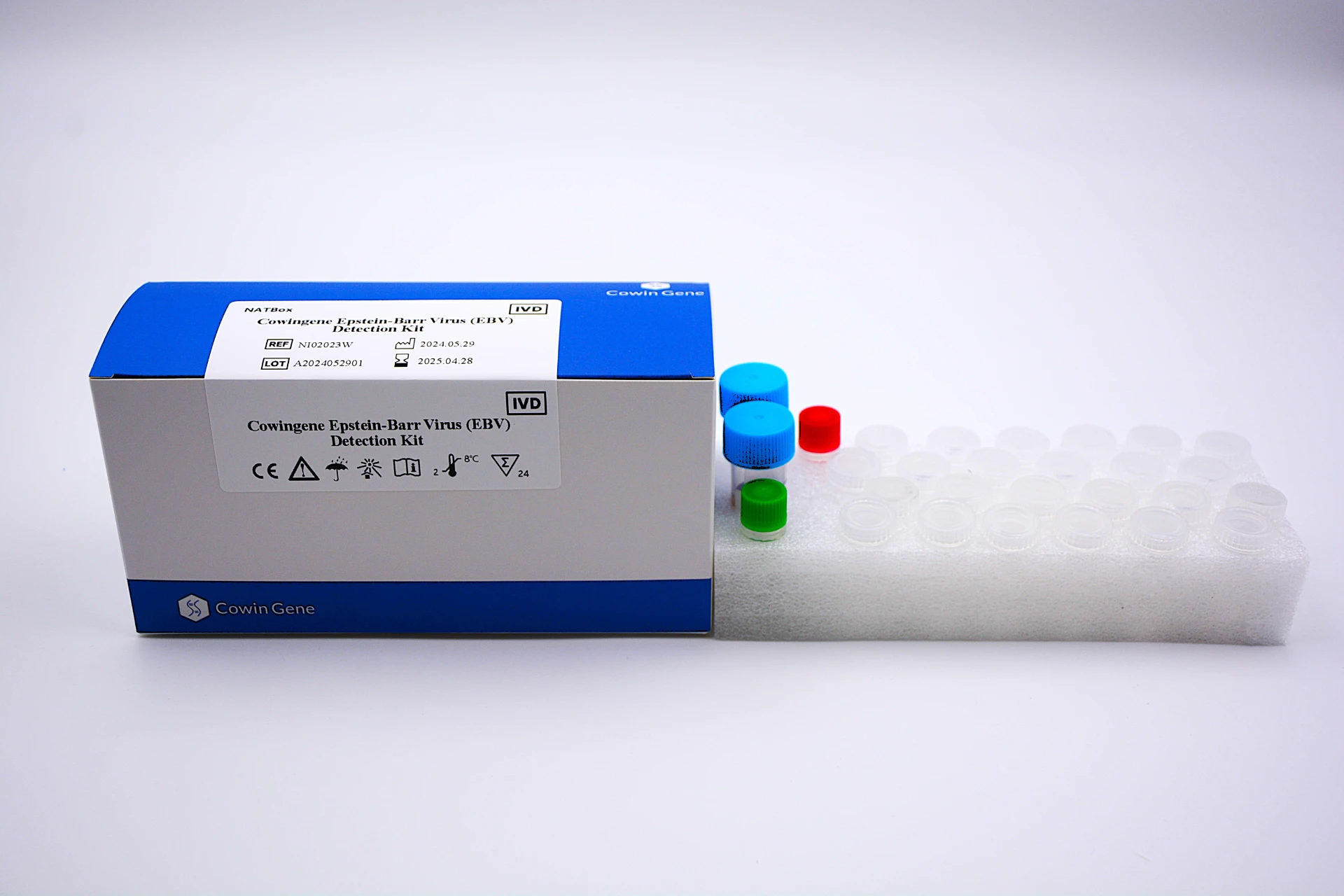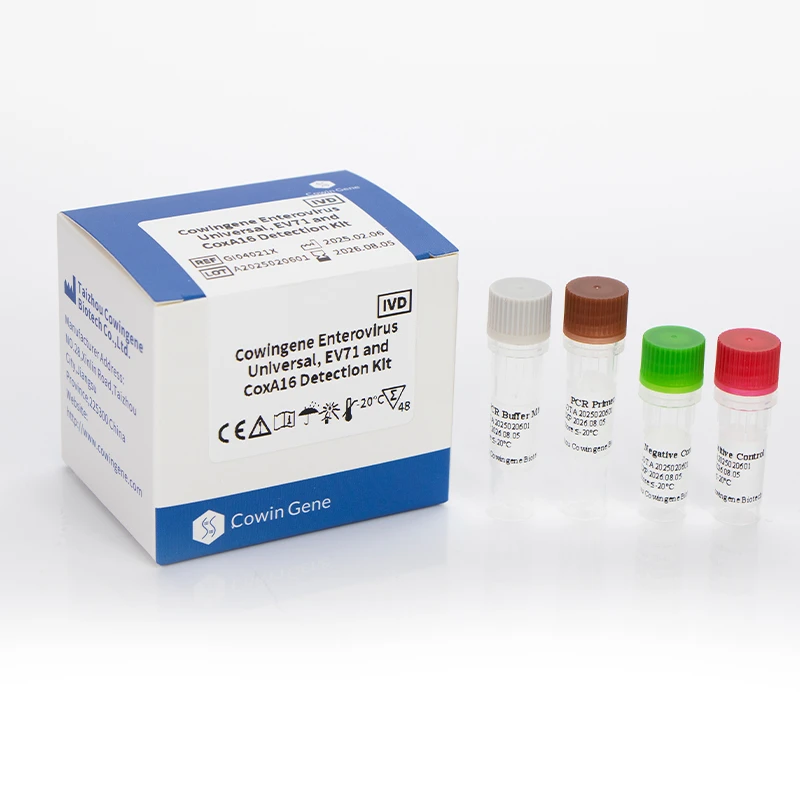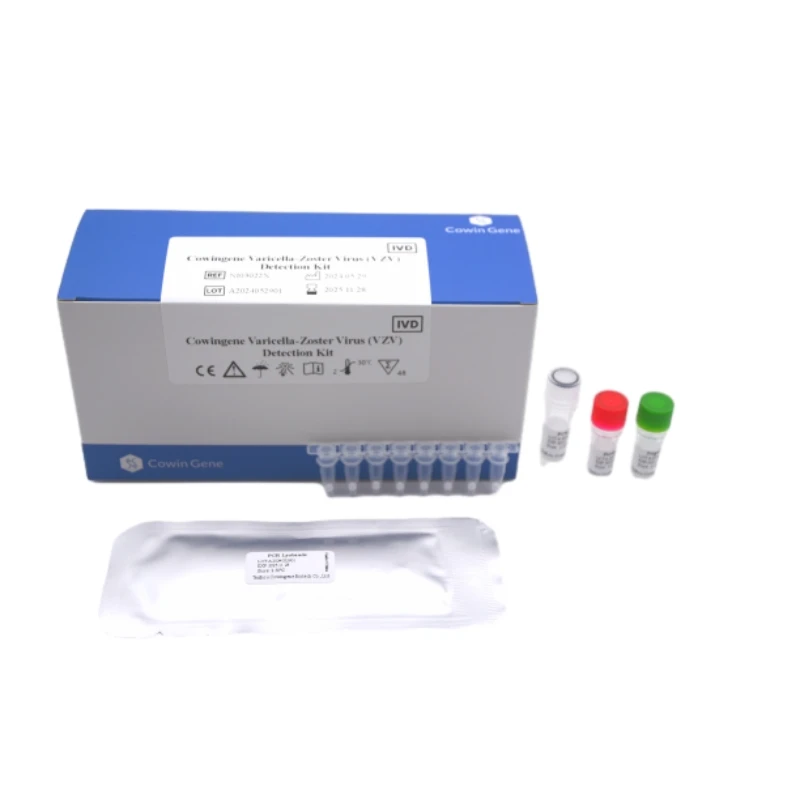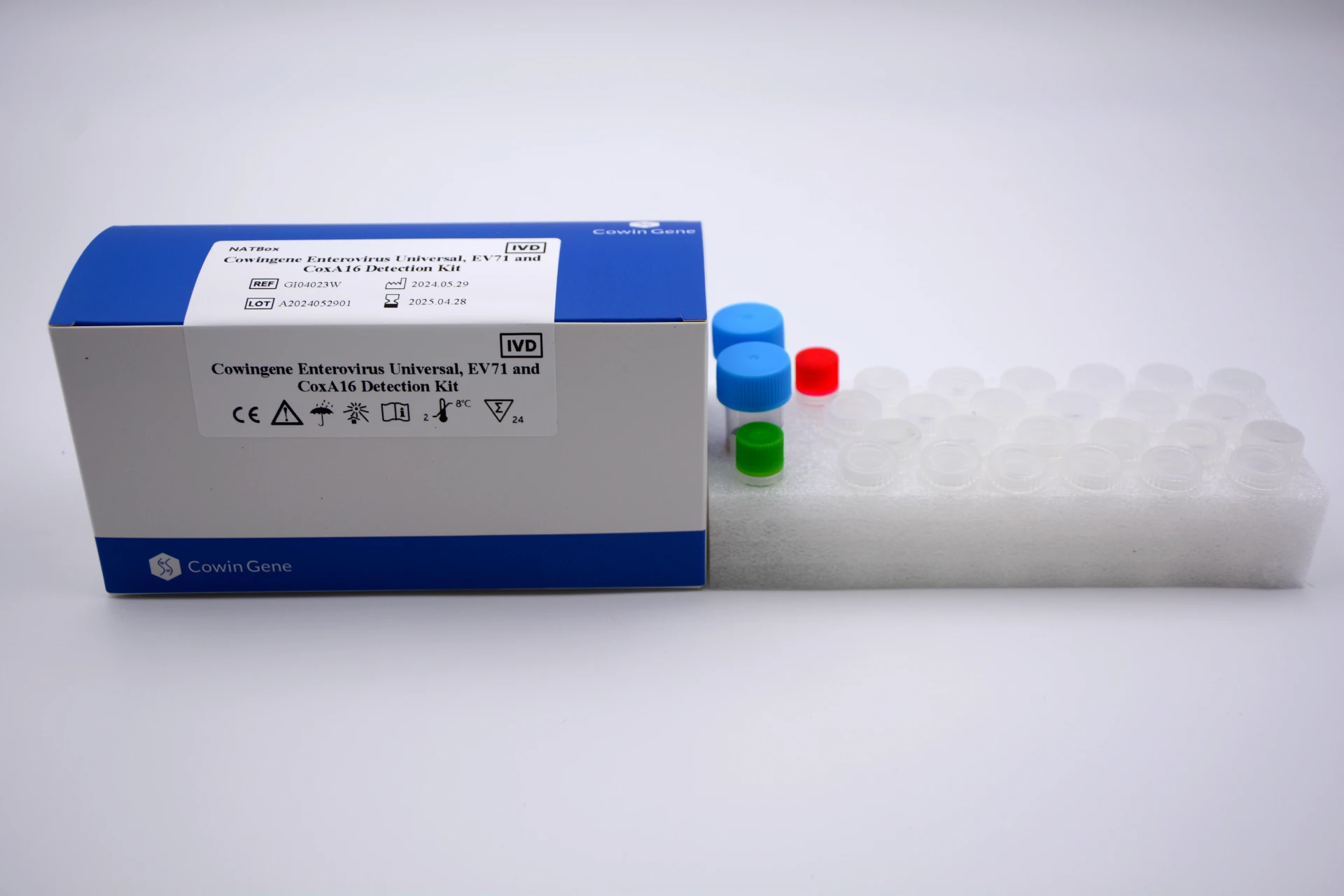Aug . 31, 2025 21:53 Back to list
TB PCR Kit and Related Technologies: Advancing Mycobacterium Tuberculosis Detection
TB PCR Kit is a critical in vitro diagnostic tool designed for the qualitative detection of Mycobacterium tuberculosis (MTB) DNA in patient samples, addressing the limitations of traditional TB detection methods such as slow culture-based assays. This kit leverages the polymerase chain reaction (PCR) technique to amplify specific target DNA sequences of MTB, enabling the identification of the pathogen even in samples with low bacterial loads—such as sputum, bronchoalveolar lavage fluid, or tissue biopsies. Unlike conventional smear microscopy, which often misses cases with low MTB concentrations, TB PCR Kit delivers high sensitivity and specificity by targeting conserved genetic regions of MTB, reducing the risk of false negatives and false positives. The workflow of TB PCR Kit typically includes sample nucleic acid extraction, PCR reaction setup with specific primers and probes, thermal cycling for amplification, and result interpretation based on signal detection. This streamlined process allows for faster turnaround times compared to culture methods, which can take weeks to yield results, making TB PCR Kit invaluable for early intervention and preventing the spread of TB.
TB RNA PCR is an advanced molecular technique that complements TB PCR Kit by targeting MTB RNA instead of DNA, offering unique advantages in assessing the viability of the pathogen
While TB PCR Kit detects both viable and non-viable MTB through DNA amplification, TB RNA PCR focuses on RNA, which degrades more rapidly in non-viable bacteria—providing critical information about active infections. This distinction is particularly important in monitoring treatment response: a decrease in MTB RNA levels over time can indicate that the treatment is effective, whereas persistent RNA presence may signal treatment failure or drug resistance. TB RNA PCR shares similar operational steps with TB PCR Kit, including nucleic acid extraction (with RNA-specific preservation to prevent degradation), reverse transcription to convert RNA to cDNA (a prerequisite for PCR amplification), and subsequent amplification. The specificity of TB RNA PCR is enhanced by targeting RNA sequences unique to MTB, ensuring that it does not cross-react with other mycobacterial species, thus improving diagnostic accuracy in regions with high prevalence of non-tuberculous mycobacteria.
TB RT PCR serves as the technical backbone for TB RNA PCR, integrating reverse transcription and PCR into a single workflow to detect MTB RNA efficiently
Unlike TB PCR Kit, which directly amplifies DNA, TB RT PCR first converts MTB RNA into complementary DNA (cDNA) using a reverse transcriptase enzyme, followed by PCR amplification of the cDNA. This two-step process is optimized to preserve RNA integrity, as RNA is highly susceptible to degradation by RNases present in samples and the environment. TB RT PCR protocols for MTB detection often include RNase inhibitors in the extraction and reaction buffers to minimize RNA breakdown, ensuring reliable results. The sensitivity of TB RT PCR is comparable to that of TB PCR Kit, but its focus on RNA makes it a preferred tool for detecting active MTB infections—especially in cases where patients have recently started treatment, as RNA levels decline more rapidly than DNA levels, providing earlier insights into treatment efficacy. Additionally, TB RT PCR can be adapted for multiplexing, allowing simultaneous detection of MTB and drug resistance-associated genes, further enhancing its clinical utility.

TB PCR Kit operations adhere to strict quality control measures to ensure the reliability and reproducibility of results, which is essential for guiding TB diagnosis and treatment
These measures include the use of internal controls (such as a housekeeping gene) to monitor nucleic acid extraction efficiency and PCR inhibition, as well as external controls to verify the performance of the kit reagents. Sample handling is a critical step in TB PCR Kit workflows: samples must be collected using sterile techniques, stored at appropriate temperatures (often -80°C for long-term storage) to prevent nucleic acid degradation, and processed in a biosafety level 2 (BSL-2) or higher laboratory to minimize the risk of exposure to MTB. Laboratory personnel must undergo specialized training to operate TB PCR Kit equipment, interpret results correctly, and maintain documentation of each step—ensuring compliance with international diagnostic standards and reducing the likelihood of errors.
TB PCR Kit plays a vital role in detecting MTB in vulnerable populations, such as immunocompromised individuals, children, and residents of high-burden TB regions, where early and accurate diagnosis is crucial to prevent severe complications
In immunocompromised patients, TB often presents with atypical symptoms and low bacterial loads, making traditional detection methods less effective. TB PCR Kit’s high sensitivity enables the detection of MTB in these cases, allowing for timely initiation of anti-TB treatment and reducing the risk of disseminated TB. For children, who often produce small volumes of sputum, TB PCR Kit can be used with alternative samples such as gastric aspirates or nasopharyngeal swabs, improving accessibility to testing. In high-burden regions, TB PCR Kit’s rapid turnaround time helps reduce the transmission of MTB by identifying infectious cases quickly, enabling public health interventions such as contact tracing and isolation.
In summary, TB PCR Kit, as the core tool, along with TB RNA PCR and TB RT PCR, forms a comprehensive molecular diagnostic system for MTB detection, addressing the diverse needs of clinical practice. TB PCR Kit excels in rapid and sensitive detection of MTB DNA, TB RNA PCR provides insights into pathogen viability, and TB RT PCR enables efficient RNA-based detection through reverse transcription. Together, these technologies have transformed TB diagnosis by overcoming the limitations of traditional methods, improving accuracy, reducing turnaround times, and supporting targeted treatment and public health interventions. As drug-resistant TB continues to pose a global threat, the further development of these technologies—such as integration with point-of-care platforms—will be crucial for enhancing access to reliable MTB detection, especially in resource-limited settings, and ultimately contributing to the global effort to eliminate TB.
TB PCR Kit FAQs
1. What is the primary function of the TB PCR kit?
The TB PCR kit is designed for the qualitative detection of Mycobacterium tuberculosis complex (MTB) DNA in human patient samples, utilizing polymerase chain reaction technology to amplify and identify target genetic material.
2. How does the TB PCR kit perform DNA analysis?
This kit employs specific primers and probes to amplify MTB DNA sequences through thermal cycling, enabling highly sensitive identification of the pathogen even at low concentrations in clinical specimens.
3. What type of samples can be processed with the TB PCR kit?
The kit is validated for testing respiratory specimens such as sputum and bronchoalveolar lavage, as well as non-respiratory samples including tissue and body fluids, following proper DNA extraction procedures.
4. What makes the TB PCR kit suitable for clinical diagnostics?
Its design incorporates internal controls to monitor extraction and amplification processes, ensuring result reliability while maintaining high specificity for MTB complex organisms without cross-reacting with other mycobacterial species.
5. How is the result interpretation performed using the TB PCR kit?
Results are determined through fluorescence measurement of amplified products, with positive samples generating specific signals above established thresholds, while negative results show no amplification curves for target sequences but confirm proper reaction validity through control signals.
Related PRODUCTS
-
Norovirus Detection Kit - Rapid, Accurate, CE-Marked
NewsNov.17,2025 -
DNA Extraction Kit | Fast, High-Yield, PCR-Ready Purity
NewsNov.17,2025 -
Human Papilloma Virus HPV PCR: Fast, Sensitive, Accurate
NewsNov.17,2025 -
Arbovirus PCR Test - Rapid, Accurate, Multiplex Detection
NewsNov.17,2025 -
Respiratory Panel Test for Fast, Accurate PCR Diagnosis
NewsNov.17,2025 -
Respiratory Panel Test for Rapid, Accurate PCR Diagnosis
NewsNov.04,2025


